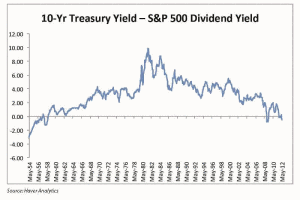Nothing particularly new this morning. The meta-story about the Federal Reserve (Fed) getting closer to more stimulus shows up on page A1 of the New York Times (NYT) with “Fed Leaning Closer to New Stimulus if No Growth is Seen” and on page A1 of the Wall Street Journal (WSJ) with “Fed Moves Closer to Action.” The articles seem to deal mostly with what the Fed could do, in a tone that suggests that this is all speculation. Interesting that it shows up in both papers in similar ways. This is probably a leading indicator of future policy, but it’s not hard news as yet.
Europe continues to simmer, although the Europeans themselves don’t seem to be all that worried. The Financial Times (FT) has two articles, “Brussels patient despite Spain’s pressures” and “ECB stands firm on Spain’s pleas,” that talk about how European officials are not planning further action at this point—and are even going on summer vacation. This insouciance would be reassuring, maybe, if it weren’t contradicted by other articles from the FT like “Rome places spending controls on Sicily” and “German private sector woes mount” and by articles from the WSJ such as “Downturn Deepens in Euro-Zone Economy” and “European Crisis Seen Spreading to Russia,” both from page A8. The Europeans still don’t seem to get it, which is mind-boggling.





